Homemade yogurt: straining for laban, labne, and labne preserved in oil
Nov 01, 2012, Updated Jan 04, 2023
This post may contain affiliate links. Please read our disclosure policy.
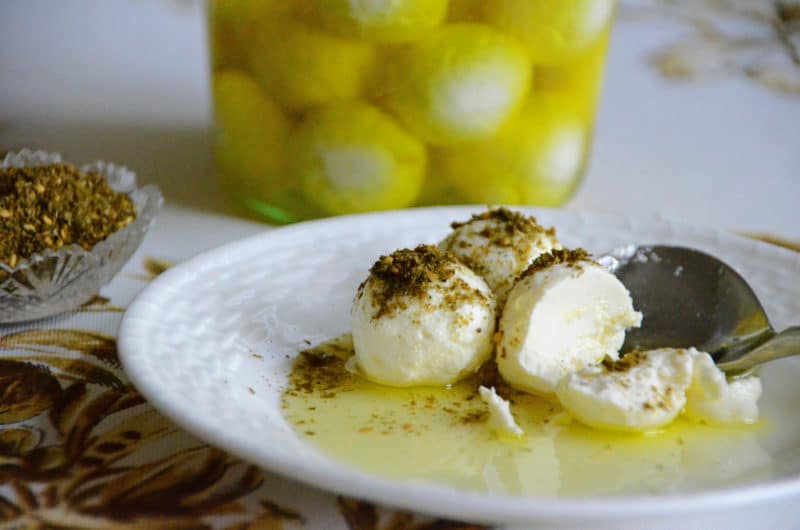
Now that we’ve got down the basics for making our own yogurt, we’re going to take it to the next level. Your yogurt becomes its finest once it has been strained some (or quite a bit) to remove the whey that makes it so thin. Straining intensifies the yogurt’s flavor, and gives it the body and texture we crave. The more the yogurt is strained, the thicker it becomes.
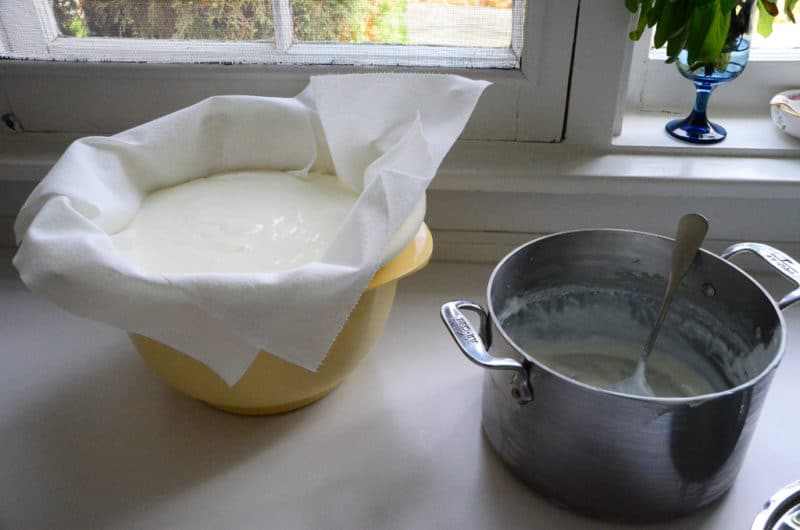
There are a couple of different ways to strain your laban: use a thin muslin cloth, handkerchief, or bread cloth that is hung from the kitchen faucet, Sitti-style, to increase pressure and speed up the draining. Or use any of those cloths to line a strainer that is set in the sink or over a bowl to catch the whey. I’ve come to appreciate, after swearing off of it for a time, the ease of using plain white paper towel lining a strainer to drain yogurt. The strained yogurt practically peels right off of paper towel, whereas with cloth it must be scraped off, and then you have a yogurt-y mess of a towel to wash. My mother always kept a paper towel tucked over her laban in the refrigerator, which soaked up the whey and kept the laban a nice thickness.
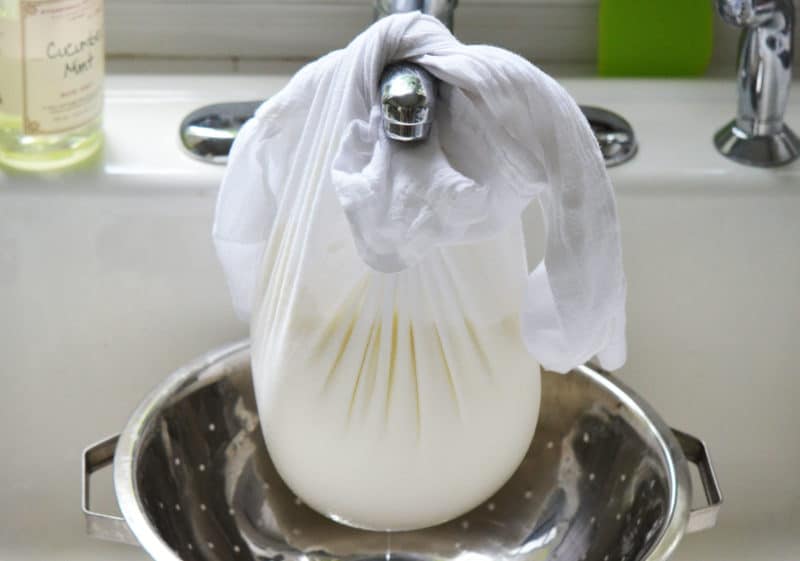
Once your yogurt is strained, and you’ve transferred it from the cloth or paper towel into a bowl, it will need to be whisked for smoothness. Because there is always a layer of yogurt that is dryer closest to the cloth, that layer when mixed with the rest forms lumps in the yogurt. These will decrease substantially when thoroughly and briskly whisked. Add a little cold water to the yogurt to help smooth out the lumps while whisking. Aunt Hilda was known to place her laban in the stand mixer and have at it until she got the smooth consistency she was looking for. If it comes down to it, you can also run the yogurt through a sieve, but I think Aunt Hilda and I are the only ones smooth-obsessed enough to do something like that.
Here are straining times (for a towel-lined strainer, as opposed to hung with pressure, which will take less time) and results you can achieve. The yogurt will be fine if left unrefrigerated while it’s being strained (which also contributes to its fermented flavor), but this can also be done under refrigeration.
Laban: Slightly strained, 2 hours. I like a slightly strained yogurt for my day-to-day eating, topped with granola or honey or nothing at all, and this yogurt is great for baking and cooking (a full cup in my recent batch of meatballs, mixed with a touch of milk, was an excellent replacement for buttermilk). I always include a good spoonful of laban in the mix when I make hummus, which does the job on creaminess, suppleness. Slightly strained yogurt is the consistency of well-stirred mayonnaise.
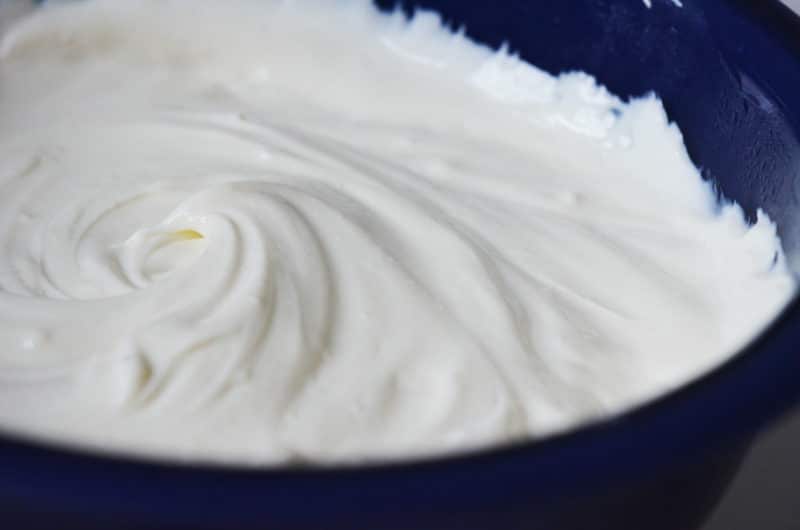
Labneh: Very strained, 6-8 hours. Yogurt strained this long becomes labne, a thick spread. This is what my Sitto ate every single morning on two pieces of buttered toast; she knew how to live. There is no doubt in my mind that I could survive just fine on a diet of labne, kalamata olives, and thin pita bread or Lebanese flat bread (plus dessert). There are very few Lebanese dishes that don’t beg for a dollop of labne to complete the plate: kibbeh (raw, baked or footballs) mujadara, coosa, eggs, shish kebab, hushwe, lubieh, grape leaf rolls…the list is endless. Labneh even improves, as cousin Vicky pointed out, our fragrant Lebanese chicken soup recipe.
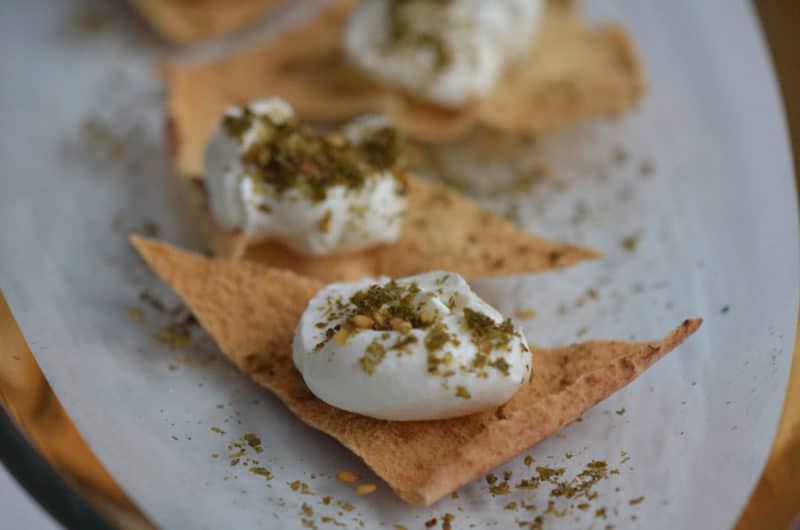
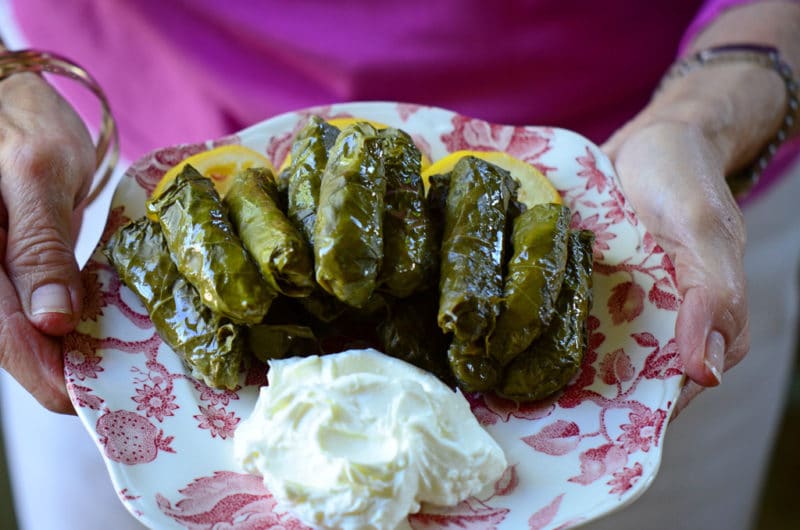
Labneh also makes wonderful dips for veggies or chips (with mix-ins like dill, cayenne, garlic or scallions), and appetizers. Try Labneh Green Goddess and use that as a dip or a salad dressing, wonderfully flavorful.
Labneh preserved in oil: 2 days. This is yogurt-cheese, and it is special. Drain your labne way down to a very thick, cream cheese consistency, which takes a full 24 hours for laban made from ½ gallon of milk (longer for larger amounts).
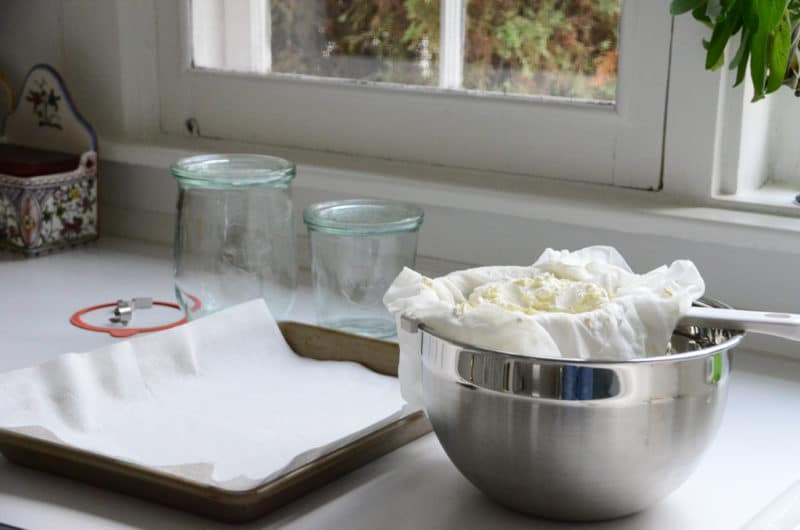
Stir in salt to taste. From this thick labne, form little balls the size of walnuts and place those on a paper towel-lined sheet pan. Then top the balls with another paper towel. Leave them to continue to dry out for another day, changing out the paper towels whenever they get saturated with the whey. Reshape the balls in the palms of your hands to make them even rounder now, then place in a clean jar. Pour excellent-quality olive oil over the labne balls, cover, and keep refrigerated for many months, up to a year. Eat these topped with their olive oil and za’atar for breakfast, as part of a sophisticated cheese plate with bread or crackers, in a salad as you would goat cheese, or atop crostini like we did with the labne. It’s not uncommon for these labne balls to be flavored with cayenne pepper and eaten spicy.

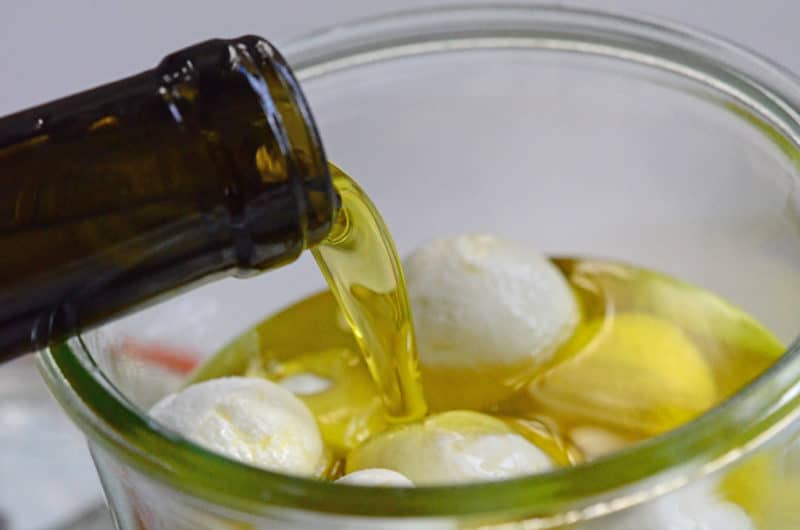
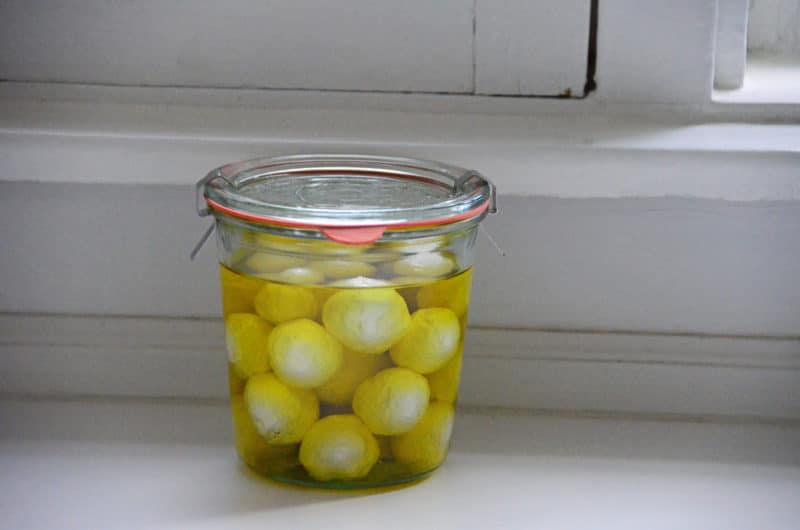
Have you had your fill of yogurt yet? Never! Let me know if you make some and how you like to eat it…I bet you’re going to enjoy adding the laban-making tradition to your own kitchen as much as I have.

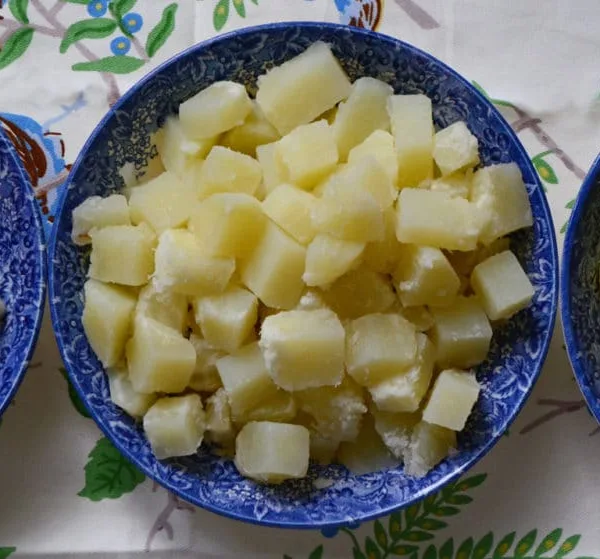
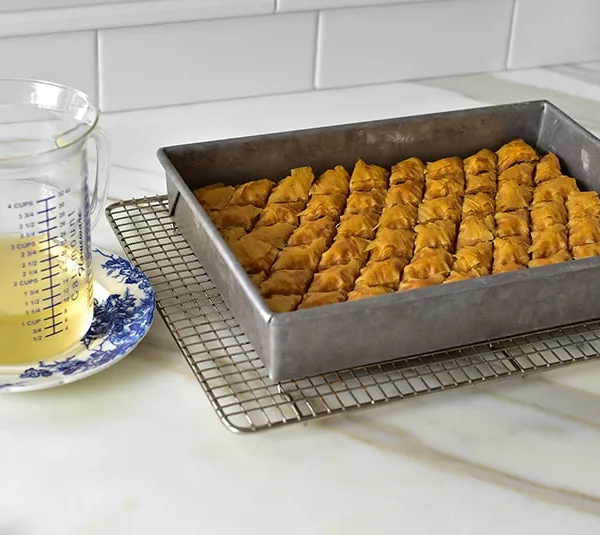
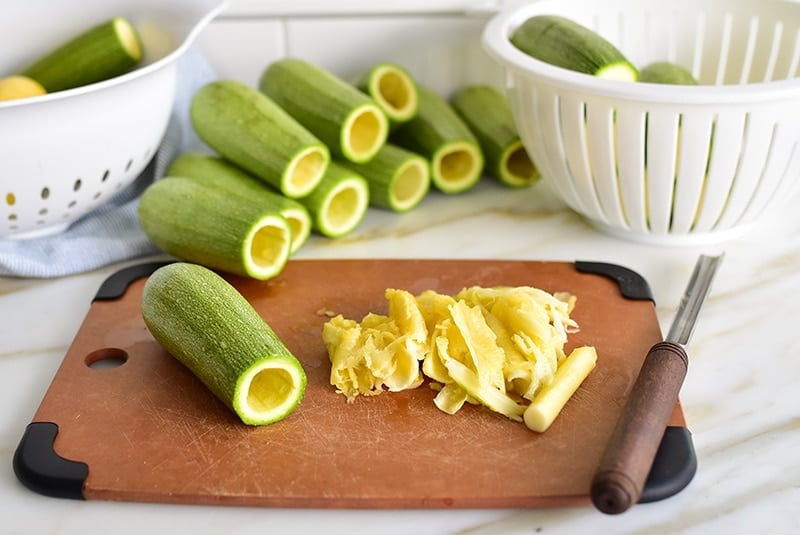







Hi Maureen – Your food is amazing. I have a few questions . I often make your Laban, labne, and cheese balls. I usually make Laban ,refrigerate for 3 day’s and then make labne or cheese balls. Can I skip the refrigerator process and proceed to labne. Also is it ok to leave the cheese balls sit on the counter while developing and when complete must they be refrigerated in the olive oil or can they be left on the counter. Thanks very much!
Hi Joy–great questions. I usually chill for just a day after making the laban, so you could reduce the 3 days to one day. I think that day of rest and chill is good for the texture and flavor but I don’t consider it essential if you want to skip altogether and strain. For the balls, you can leave them on the counter to develop, but unless they are processed as for canning in a sterilized jar that is then heated, the balls in oil should be kept under refrigeration (and brought to room temperature before serving) to stay on the safe side!
Hi
I would like to thank you for your recipe. I attempted to make the Labneh balls everything seemed to go well. Unfortunately, after leaving it on top of a cabinet for a few day in olive oil I went to try one and it had mold on it . Needless to say I became alarmed and decided to further investigate the jar and I found a blacken color on other balls and some of them had a pinkish tint to them. Please tell what I may have done wrong to get this reaction.
Hello Najia–keep them in your refrigerator if you aren’t “canning” the jars. Bring to room temperature before serving.
I just found your blog this past week. Absolutely the best for Lebanese dishes. Very similar to mine but more fine tuned and much more consistent (which is my problem). I truly appreciate your recipes. Very close to my Mother and Grandmother’s cooking. I tend to believe it is all in “the hands”, as my mother would say. Hard to replicate that. Thanks Much!
Thanks so very much Robert! Your mother and grandmother would be proud you’re perfecting your dishes!!
Hi,
Great post though i have one question – do i have to put it in my refrigerator to strain, or can i leave it outside?
Thanks
The yogurt can be left at room temperature for straining. This encourages more tang in the flavor of the yogurt.
We use Melita paper filters in a plastic conical holder to make coffee. I also use Melita filters to drain yogurt. I spread Saran Wrap over top of filter, on top of that goes a round Turkish coffee saucer, on top of that goes a heavy Aluminum foil-covered clean rock. I like hanging the yogurt in a bag from my cabinet in the kitchen, but have small kitchen and hanging bag dripping yogurt whey gets in the way of life. Thank you for your recipe for yogurt balls. I always wanted to make my own. You showed how to do it!
My kitchen is small too so I hang mine from bathtub faucet
That works!!!
Hello Maureen – When I make the cheese balls at home the olive oil solidifies but when I buy them in the store the oil stays liquid in the refrigerator. What am I doing wrong? Is the store using a different oil or is the oil mixed with water. How do I get the oil to stay liquid like store bought cheese balls?
Thank you !
Hi Jen–nothing is wrong! My olive oil always solidifies in the refrigerator. I don’t consider this a problem, because the oil quickly “melts” at room temperature.
I’m very excited to try this as soon as I get some starter culture to make my laban. Just for my clarification, if you’re straining for labne or to make the cheese balls, should you do this in the refrigerator or will it matter if it’s at room temperature? Thanks for sharing these techniques!
You will love making your own laban! Youc an strain at room temperature. I do this in the sink and have left laban out for a full day, which just encourages more fermented flavor.
Hi Maureen, I’d like to use my laban as a starter for the next batch… is there a way to control how sweet or tangy it turns out?
Hi Eric! If my starter isn’t tangy enough, I often add a squeeze of lemon juice to it and that flavors the new batch nicely.
Hi Maureen. I like making Laban and have just started making labneh. How long can Laban and labneh be kept in the refrigerator.
Hi Joyce–I’ve had laban/labneh last at least a month, and often much longer, in an airtight container in the refrigerator. The scent of the laban/labneh should be fresh and still have its tang without any mustiness. Let your nose be your guide!
H,I was wondering if you could preserve the labneh balls in Maple syrup?
That’s an interesting idea! I haven’t attempted this or thought of it, but I suspect the labneh would taste delicious with the syrup. Let us know if you do it!
I adore Labneh balls, this recipe looks amazing will definitely give it a try!
I mean, hang the yogurt in the jelly bags, clean of course…sorry for the mistake in writing. 🙂
I’ve been making yogurt from a friends Jesey cows, heavy in fat. Since I make jellys, I thought to hang the yogurt in them and make laban. SOOOOOO good! I wonder how good it is for you too? Any idea?
What is the typical milk to use, goat? Sheep?
Thanks for you passion
Hi Louise–in Lebanon the laban is often made with goat’s milk and boy is it delicious, so complex and flavorful! I bet yours is excellent!
I found this page when questioning the directions I have for homemade yogurt. My first attempted batch is (hopefully) doing its thing as I type. My goal is Greek yogurt.
Wow! I am so inspired by your information, images, and writing style! I clicked on your home page link and almost cried. Just lovely! Thank you!
And, I would love to be your taste-tester, should you ever be in need!
Hello, I want to thank you for your yogurt tips, I don’t know if your family made the Syrian dish called Sheshbarak. My dear departed mother-in-law made those little tiny dumplings filled with lamb and pine nuts and her sauce was made with yogurt and not milk as some of the Middle Eastern recipes call for. It is to die for. She also put little oval Kibbie balls in this amazing dish. Just wondering if you have ever had it. If not-let me tell you it is just fabulous. Diana Metry Eppens
Diana, this dish is wonderful and will be included in my cookbook! Thanks for your note!
Hello Maureen,
Lovely recipe and excellent instructions . Can you tell me how long I can keep my labne in oil in the fridge ?
Thank you
Hi Ann, and thank you–I’ve found it lasts several months if the labne is totally submerged in the oil. Delicious!
OMG! OMG! OMG!!!!! I know I sound like a school girl but I don’t care! This is the recipe I’ve been looking for now for almost 10 years!!!!
Going to make this next weekend.
Thank you Maureen!!!!!
That’s just the cutest, funniest string of comments you left on a few different posts! I’m so delighted to hear from you and to know you’ve found the recipes. Let me know how it goes! Thank you!
Thank you so much for the wonderful detail on these recipes. My yogurt is on its way to becoming laban! On question: I can’t seem to get the tangy taste that I remember from my childhood. Any suggestions?
How nice, thank you! That flavor depends a lot on the flavor of your starter, but you can encourage tang by letting the yogurt incubate for a full 24 hours.
Maureen, Thank you so much for this post! We just tried making Labne balls using our Plain Whole Goat Milk Yogurt. They came out fabulous! We used just a little salt, and added an herb blend that had crushed brown mustard seed, garlic, rosemary, black pepper, Mediterranean thyme, savory, parsley, lavender and sage. Delicious!!! We’ll be making this often!
Wow! I can just imagine how delicious your labne is made with your special goat milk yogurt and all of those creative, wonderful spices and herbs. Thank you so much for letting me know about your success making labne balls…how I’d love to come and try them there!
Hi Maureen
Great blog. And thanks for posting about labneh. I tried it out last night, however my starting point was greek-style yoghurt. This morning it was a fantastic consistency, just like you would expect from labneh, however I didn’t get the sourness of the real thing. Is it due to the yoghurt (as I suspect), or something else? I used the hang-from-the-tap method.
Thanks!
Thanks Ali! The starter plays a huge role in flavor. I always try to start with a rather sour starter since anything else turns out a bland laban.
I’ve added a couple of tbsp of lemon and a dash of salt. 90% there. I’ll try a different yoghurt next time, or make my own!
This looks fantastic! Could you add garlic or green onion to it? If so, would you do it in the beginning when hanging it or at the end?
Absolutely…labne is your blank canvas! Add garlic, green onion, or other stir-ins to labne after it is drained.
Hi Maureen,
I live in Dublin, and look forward to trying this recipe. have just discovered your blog through Heidi and 101 cookbooks.
Pauline
How nice Pauline, thank you–and I look forward to seeing you here!
I strained my labnee into balls and poured olive oil over it but the oil turned hard in the fridge. What did I do wrong. Maybe my labne still had too much water?
Cathy, great that you made these. The oil always hardens when chilled. It will return to liquid quickly if you leave the jar at room temperature for a little while.
Maureen….I really enjoy reading your posts, refreshing and enjoyable to read. My mother and father both made the Labnee in our house. I just learned from you. I like mine on the thicker side so I used the paper towel in the strainer and left it in the fridge for 2 days. I emptied the pan 3 times as it produced alot of fluid, however it is still not at the thickness I would like. Any sugggestions for me?
Hi Denise–I’m so happy to hear you are making labne. You can keep going with the strainer as you are doing, for another day or two and that should get you there. Hanging the labne in a thin, clean bread towel or layers of cheesecloth from the sink speed this process up from the pressure created that way. Also, with the paper towel/strainer method, you can cover the top of the labne with a paper towel as well to absorb from that direction, and change it frequently as it gets saturated with the whey. Let me know how it goes! Thanks for your question–
Thank you, Maureen for these wonderful recipes so reminiscent of my mother’s cooking. Although I haven’t attempted to make my own laban for some time, you have inspired me to do so when I see how simple and satisfying it can be. I, too, remember my mother hanging the cheesecloth over a bowl on the kitchen counter and how Mum would save the rawbi each time for the next batch. Living in rural Quebec in the 50’s, one saw very rarely, if at all, commercial yogurt.
I recall sitto (father’s side) hanging a large ball over the sink. For some reason though us kids never caught on to liking the labne balls, of course we didn’t get them that often and in Wisconsin regular dairy cheese was very popular. I know, adulteration at best.
Jerry
Jerry, I wonder if we are related. My maiden name is Waken and my father’s family is in Oklahoma. Do you have any connect to any Oklahoma Wakens?
I agree with Diane. This post is the BEST!!!! It is soooo mouth watering and the stories bring me back to my Sito’s. Never a day without Laban or Lebane.
Love labne! No Lebanese child ever gets enough labne so we grow up labne-deprived and craving it! My Mother always tied it to the faucet in a towel to drip all night–which only served to increase a small child’s delight the next morning!
So true!